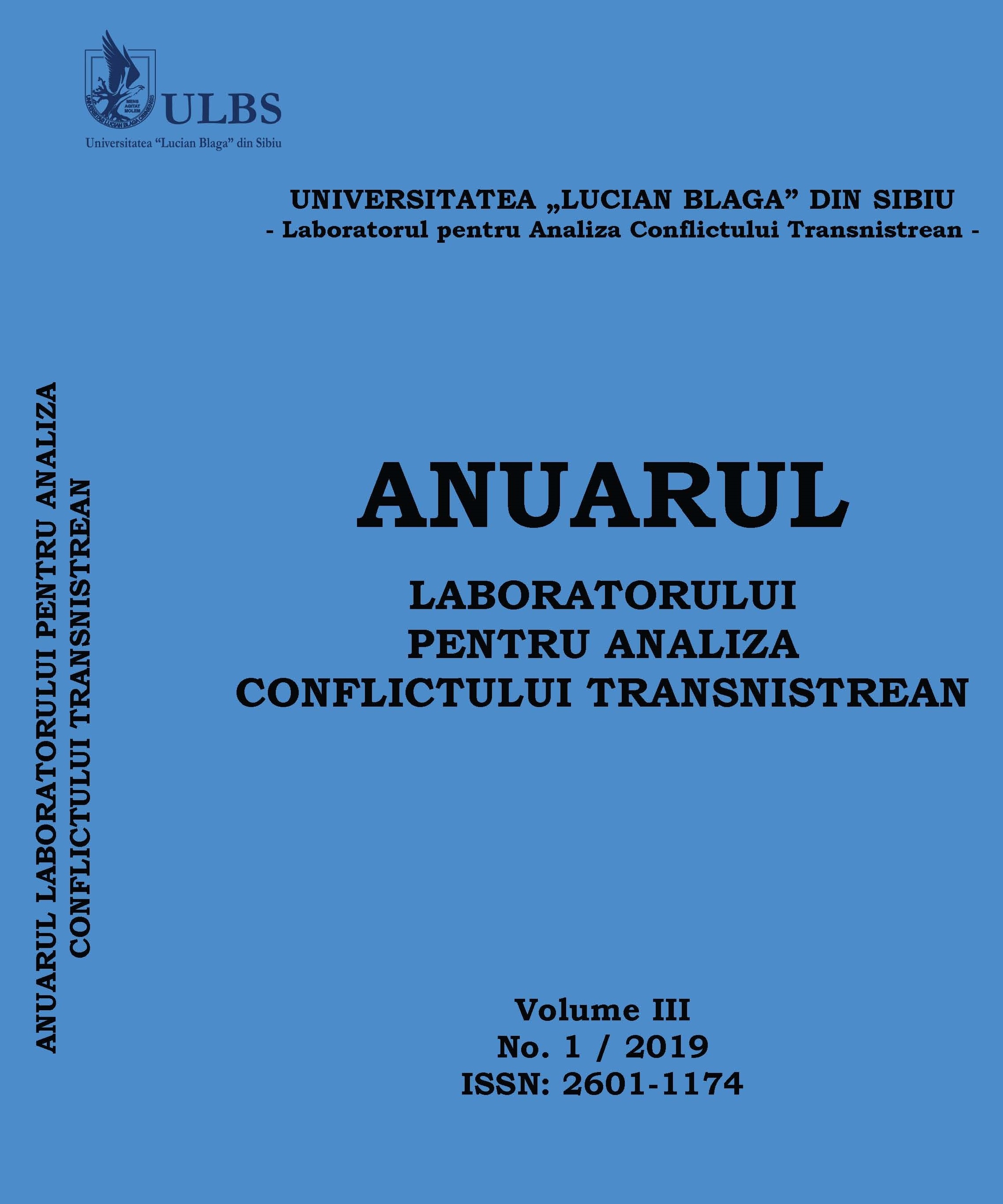DIRECȚIILE ȘI INSTRUMENTELE DE POLITICĂ EXTERNĂ
ALE FEDERAȚIEI RUSE ÎN PROBLEMA TRANSNISTREANĂ
FOREIGN POLICY DIRECTIONS AND INSTRUMENTS OF THE RUSSIAN FEDERATION IN THE TRANSNISTRIAN ISSUE
Author(s): Mihai MelinteiSubject(s): Governance, Government/Political systems, Security and defense, Military policy, Welfare systems, Geopolitics, Politics and Identity, Peace and Conflict Studies
Published by: Editura Universitatii LUCIAN BLAGA din Sibiu
Keywords: Russian Federation; Foreign policy; Republic of Moldova; Transnistria; the Transnistrian conflict; Post-soviet conflicts; CIS; Transnistrian regulatory process; OGRF;
Summary/Abstract: The foreign policy of the Russian Federation towards the Transnistrian problem has evolved ambiguously since 1991, taking into account the changes in the international environment and the internal political crises. In the initial phase, the difficulty was that the documents adopted did not correspond to the changes in the status of Russia, which ceased to be a Union of states, but the ambitious tasks remained a solid foundation in the fundamental concepts of foreign policy. With the appointment of Yevgeniy Primakov as the Minister of the Ministry of Foreign Affairs, Russia's foreign policy has become more balanced. The main objective initiated by it was the inviolability of the principle of territorial integrity and assistance in resolving conflicts in the post-Soviet space. Thus, a fixed direction of Russia's foreign policy on the Transnistrian issue began to develop, which developed in two directions: the recognition of the territorial integrity of the Republic of Moldova, the mediation in the political negotiations on the status of the Transnistrian region and the interaction with the Transnistrian region in economics, culture and military.
Journal: Anuarul Laboratorului Pentru Analiza Conflictului Transnistrean
- Issue Year: III/2019
- Issue No: 1
- Page Range: 102-119
- Page Count: 18
- Language: Romanian

